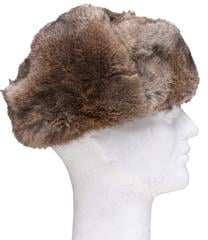Operation Unethicality Program 2019 - 2021: On Our Carbon Footprint
Hey gang, we compensated our carbon footprint, as far as we know it!
In this text, we'll tell you what we know and don't know about our carbon footprint, and why we have decided to buy offsets to compensate for it.
We have calculated the first version of our carbon footprint. It actually doesn't tell you much, because there's a vast amount of things we are unable to calculate. You'd think that with the big mouths we have about environmental issues, we'd know our impact on the environment even as a rough estimate, but no. Very few companies calculate these things, and it's hard to find tools and standards for the job.
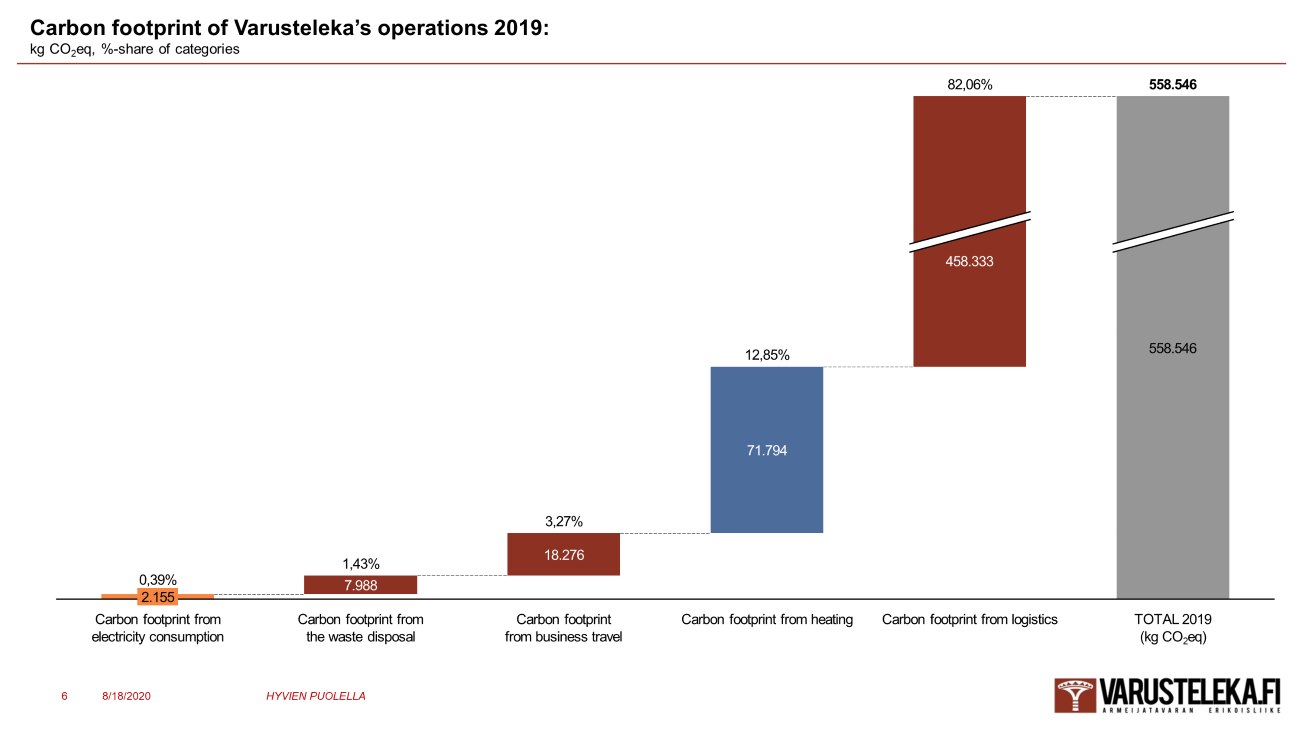
At this point, we calculated the carbon footprint of the property where we operate our HQ, warehouse, and store; waste management; business traveling; and logistics. The leader on the scoreboard is logistics and the majority of its emissions are caused by exports, as DHL carries our parcels to the US by air. The Finnish postal service, Posti, shines here: Posti takes care of their own compensation, so we can buy logistics services from them with the carbon offsets already factored into the price.
Those who are paying attention will notice that laughing gas and methane are also included.
Outside of the scope of our calculations - for now - is the life cycle of our products from manufacturing and using to the disposing of them. This wasn't done to cook the books, but simply because it would have been too big to handle in this schedule.
Useful basic knowledge
The Carbon Footprint means carbon dioxide emissions caused by human action. Usually, this is expressed in carbon dioxide equivalents (CO2-eq), which takes into account other significant greenhouse gases, such as methane (CH4) and laughing gas or nitrous oxide (N2O).
A carbon footprint can be calculated for a company, organization, action, or product. Societies following the principles of circular economy have a smaller carbon footprint. According to some estimates, over half of the carbon dioxide emissions by mankind stems from sourcing and controlling materials and manufacturing tangible assets.
Carbon Dioxide Footprint at Three Levels
The levels of the CO2 footprint are specified in the GHG protocol, which is a global standard for calculating these emissions:
Level 1 includes direct emissions from running the company HQ, warehouse, and store. In our case, this means heating emissions.
Level 2 includes indirect emissions from producing the electricity we use.
Level 3 includes indirect emissions from our production processes upstream, using the products downstream, waste management, and business travel.
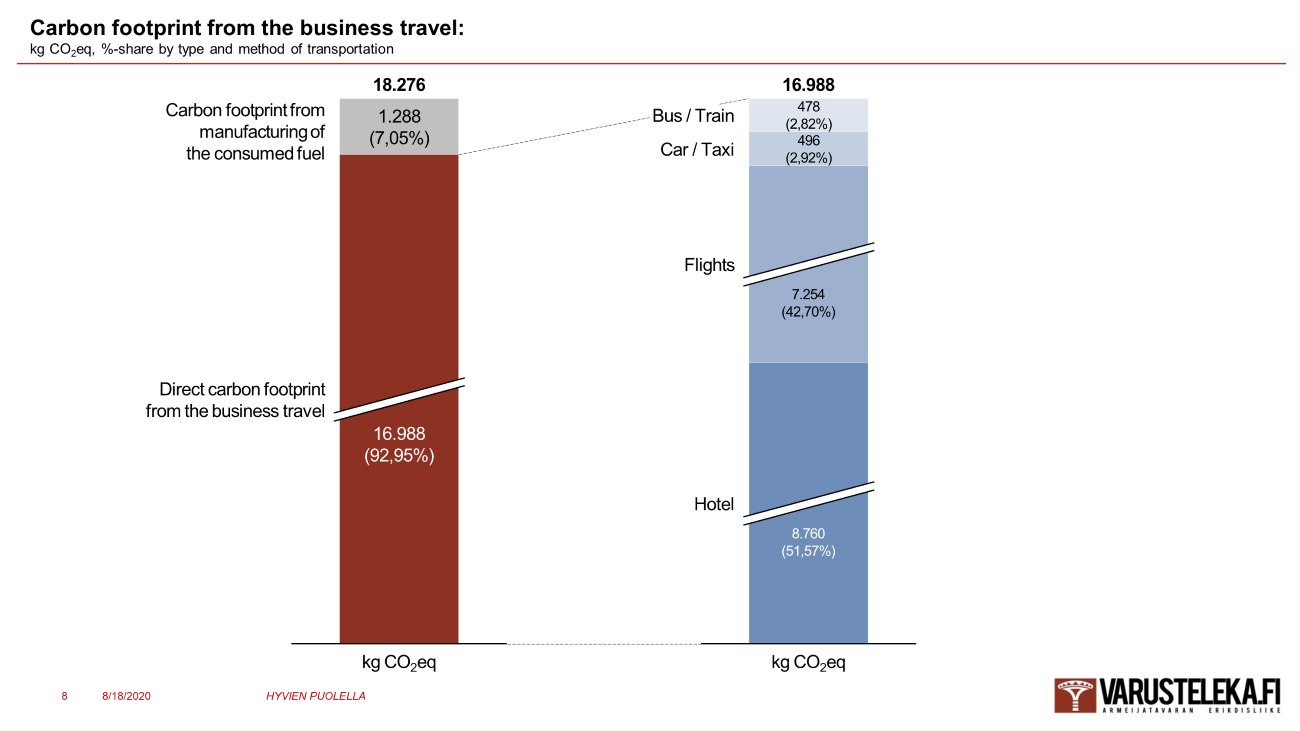
Our choice: Y-Hiilari
The carbon footprint can be measured by various means and none of them are objectively the only truth. We looked at the options and decided to go with a company-specific and simplified Y-Hiilari by SYKE, the Finnish Environment Institute.
Y-Hiilari has been developed at the Finnish Environment Institute in the Carbon Neutral Municipalities- project (HINKU). The calculator takes into account heat production, electricity production, waste management, transportation, and business travel.
Challenges in accuracy
The sum total of carbon dioxide equivalents is 559 metric tons for the year 2019. The majority - over 82% - of this is caused by logistics. This can be broken down into purchases from our store as well as Matkahuolto, PostNord, and Posti deliveries to domestic and international customers for 5,637 kg CO2-eq, and DHL export deliveries for 347,590 kg CO2-eq. The remaining 105,106 kg CO2-eq is from the incoming supply.
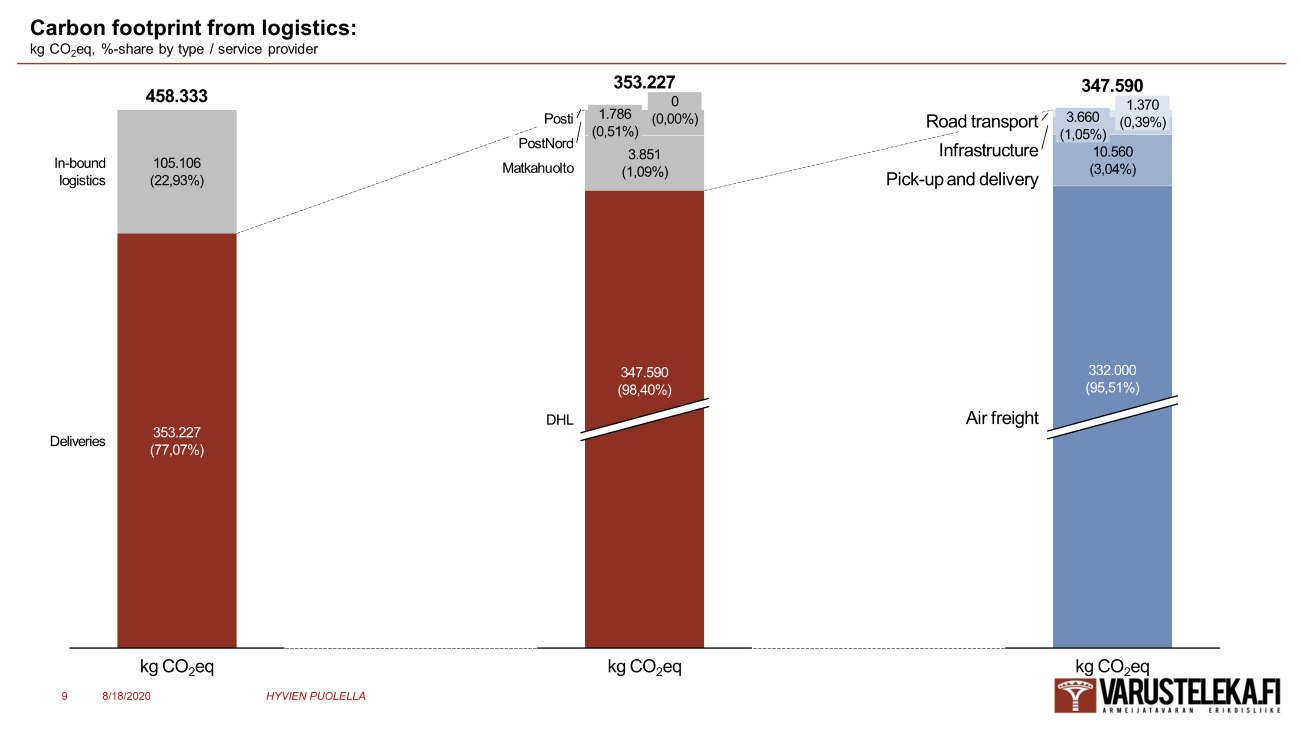
We have not arranged for separate waste management for Varusteleka, but we share it with the three other occupants of the property. We have calculated our share to be 1/3 of other waste types, but 1/5 of metal waste, as one of the occupants is Kalevala Jewelry, who presumably produce the most metal waste of us. The amount of cardboard is accurate, as we have our own cardboard compressor and recycling pick-up schedule.
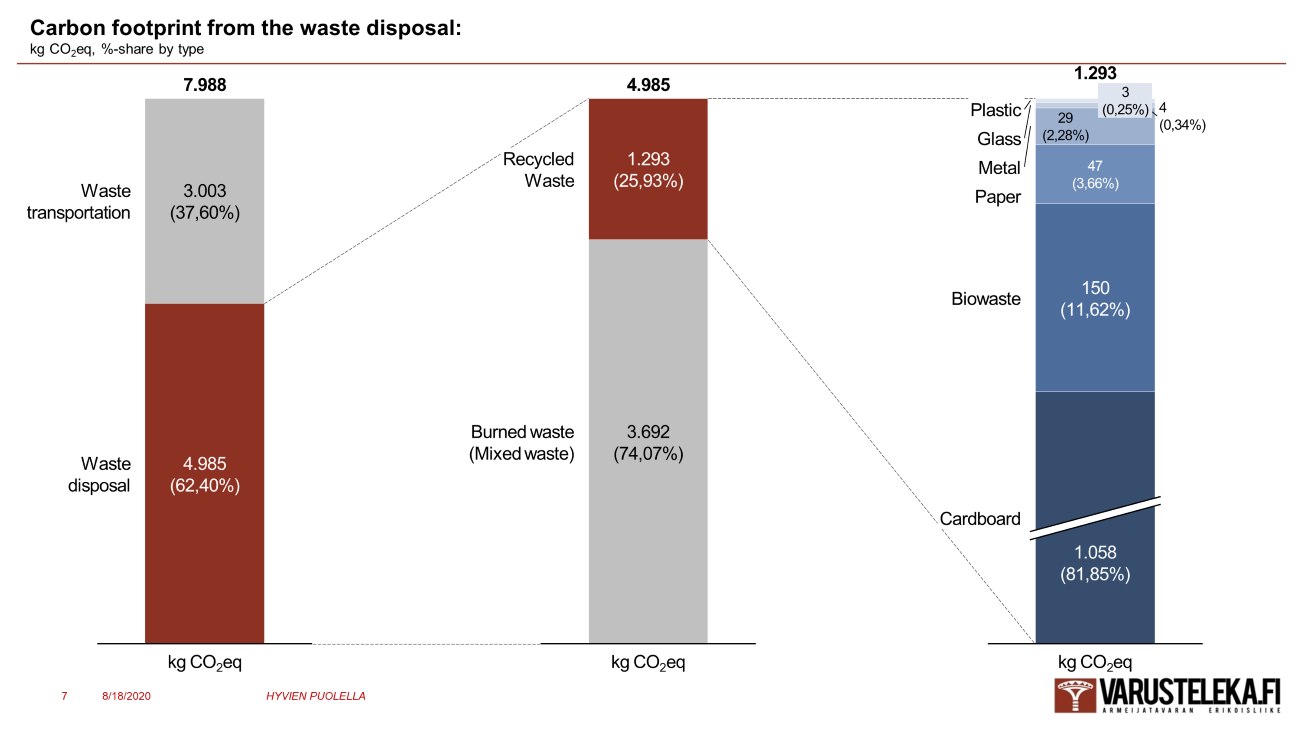
We don't have a separate meter for district heating, as this is shared between the occupants. Our share of the area within the building is 40% so we used that number.
The greatest sin of heating is the district heating we use. About 55% of it is produced by burning coal. There are better options available and we are looking into those, but even if we pay for renewable district heating, it doesn't affect where the exact heat in our radiators comes from. We'd just be paying more so that someone, somewhere gets actual renewable district heating. Thankfully, in the year 2029, burning coal will be illegal also in Finland.
Help with accuracy
We will cooperate with Compensate to get more accurate information in the future. During the fall of 2020, we are preparing a carbon footprint calculation for individual products of our house brands. We strive to buy an equivalent amount of carbon offsets so it will be taken care of as you buy them.
We chose to work on this with Compensate for two reasons: first off, they are credible and science-based, and they can help us with our calculations, which are still in progress.
Aren't these indulgences?
The voluntary carbon offset market has received lots of criticism and our board was not unanimously happy about this route. But the thing is, something has to be done about emissions sooner rather than later. Because we aim to be The Goodies (tm), we either stop producing shit or offset the shit we produce.
Onwards
We're still at the beginning of this operation, and we'll have to tackle difficult questions as we go. Examples would include - but are not limited to:
- What is the carbon footprint goal of Varusteleka in the coming years, and how will we achieve it?
- When will be the net emissions of Varusteleka be zero?
- How does Varusteleka reduce the carbon footprint of our customers and value chain?
- How does Varusteleka change the industry practices?
- Does Varusteleka set goals for our partners and associates?
- Will Varusteleka cease to sell something due to a possibly unsustainable carbon footprint?
Don't inhale and start waiting just yet; we think this should be done with care and consideration.

